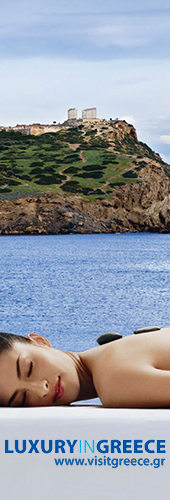- About Us
- Latest News
- Calendar
- Education
- School History
- ELA - For Toddlers
- Greek as a Second Lang.
- Greek as a Primary Lang.
- Conversational Skills (Online)
- Online Greek Courses
- Greek for Adults
- Ancient Greek
- Open Seminars
- Creative Drama
- Traditional Greek Dance
- Apply to Teach
- Holiday Program Enrolment
- Excursion - Museum
- School Polo Order Form
- Parent Notice to School
- Community Churches
- Membership
- Greek Centre

| The Foundation of the GOCMV (est. 1897) |
|
The formation of Greek communities in Australia echoes familiar patterns of migration followed by Greek nationals for centuries. Although records indicate that the Greek Orthodox Community of Melbourne and Victoria (GOCMV) was established in 1897 evidence suggests that for years prior to this date the Greeks of Victoria acted in a coordinated manner. In 1851 when gold was discovered in Victoria the promise of new wealth brought people to Australia from all over the world. Amongst this wave of immigration was a small community of Greek settlers ready to find their fortune. According to one of the first censuses conducted in Victoria in 1854, sixty-five men of the Greek Orthodox Church resided in the new colony. The first wave of Greek migrants lived the “Eldorado” mentality in their quest for wealth, doing what they could to find prosperity. The majority of these Greeks had signed agreements with shipping owners based in the ports of England and received their seaman’s ticket as a way of travelling to the new country. They were classified as Ordinary Seaman, condemned to work long and hard at the hands of taskmasters who were able to exploit them for their own gain.
The desire to escape their torment in order to seek a better lifestyle sparked the idea to escape to the recently discovered goldfields of Victoria. It was those Seamen who formed the first cohesive Greek community in Australia, travelling throughout the goldfields in search of prosperity. Living together in harsh conditions they established a strong sense of mateship and solidarity. Their closeness heightened at times of tragedy such as mining accidents or deaths, which occurred frequently under their horrendous working conditions. In essence it was the idea of a community spirit that identified these transient migrants. A lot of early Greek settlers remained within the colony by virtue of marriage whilst others established small businesses to take advantage of the unprecedented economic prosperity bestowed by the discovery of gold. Although no official organisation was established during the early first wave of Greek migration, distinct groups began to emerge during this period. The main group of Greeks that established themselves in regional Victoria were those fossicking and digging for gold within the goldfields; a second group of fisherman had established themselves in the Peninsula district by the early 1870s and third group of Greeks, some former miners, resided within what is known today as the CBD of Melbourne as small business owners. Early documents show that in 1867 a Greek Orthodox Priest visited the Colony of Victoria with the apostolic mission to collect funds for Orthodox Charitable institutions based in Jerusalem under the auspices of the Patriarch of Jerusalem. The passenger list for the “Geelong” in August 1867 clearly indicates that “a Greek priest” was amongst those passengers to enter Port Phillip. The priest, Father Christopher, took up residence in Melbourne and as the Argus newspaper noted on the 30th September 1867: “The Rev. Father Christopher, a priest of the Orthodox Eastern Church arrived in this colony, chiefly to solicit aid on behalf of a mission establishment in Jerusalem with which he is connected, and to which he proposed to return on the termination of his visit to Australia. His testimonials have been examined by those competent to judge, both in India and here, and pronounced satisfactory” In the following months, a series of appeals for monetary assistance appeared in the Argus informing readers of Father Christopher’s mission and appealing to benefactors. An account was opened at the National Bank of Australasia to collect all funds raised. Father Christopher resided at the Chusan Hotel at Sandridge, which was owned by Andreas Lagogiannis, an early Greek resident of the Colony from the City of Patra (located on Nott St. Port Melbourne). Towards the end of 1867 he departed Melbourne and took up temporary residency in Claremont Queensland. Despite this there was very little advancement in establishing a Greek representative organisation until the early 1890s. During this period the Greek residents of Melbourne were advocating the establishment of a Greek Orthodox Church and subsequently an organisation that would advance their religious needs. The Sydney Morning Herald in an article entitled ‘The Greek Church – Melbourne’ noted: ‘‘The Minister of Lands has received a letter signed by three Consuls of Russia, Serbia, and Greece asking for a grant of land on which to erect a church building for the use of the Greek Church” Unfortunately the minister, Mr. McIntyre, replied that he had no power to make such a grant. Furthermore an article that appeared in the Argus on the 30th October 1894, noting that the “Greek Orthodox Church” had donated a sum of money to the Sunday Hospital charity appeal. This means that despite not having their own place of worship the Greeks of Melbourne acted in an organised manner under the banner of “The Greek Orthodox Church”; such coordinated and efforts continued during this period of time with the collection of funds for the purchase of land for an Orthodox Church (corner of Victoria Parade & Lansdowne Street) and contributions towards to charitable institutions in Melbourne and also towards the Greek war effort for the independence of Greece. In 1897 another visiting priest, Archimandrite Dorotheos “Samios” Bakalaros, was conducting services both in Melbourne and Sydney. He’d arrived in Melbourne aboard the Steamship “Gera” on August 18 of that year and on the 22nd he conducted his first service. Archimandrite Dorotheos’ services continued in Melbourne until the end of October of that year, after which he departed and continued his services in Sydney. The first premises used as a church were located at Chalmers Hall, Gipps St. East Melbourne and then at the Unitarian Hall, Grey St. East Melbourne. The newly formed Greek community contributed funds for both the rental and the ecclesiastic decoration of these temporary premises. Prior to these dates, a skeleton church operated without a priest, offering Sunday Mass to its congregation. A committee of the Greek Church operated from at least 1894 in Melbourne and they made efforts to recruit members and attain the services of an Orthodox Priest from the Patriarch of Jerusalem. The main representatives of the Greek Community – Alexandros V. Maniachis, Antonios J.J. Lekatsas and Grigorios P. Matoorekos – received a positive response from the Patriarch of Jerusalem Damianos and on the 22nd June 1898 Father Athanasius Kantopoulos arrived in Melbourne aboard the French steamer the Ville De La Ciotat. The Argus, in an article dated 1st July 1898, noted: “Father Athanasius, the first Greek clergyman who has come to Victoria to attend to the spiritual needs of the members of that church, waited on the Chief Secretary yesterday with a letter of introduction from the British consul at Jerusalem, and credentials from the Patriarch of the Greek Church. He asked that he should be allowed to perform religious services and celebrate marriages. Permission will no doubt be given.” As of this point the church received legitimate sanction from the statutory authorities of the colony and began operating immediately with bona fide authority. From that time forward services were conducted under a legitimate spiritual entity with the endorsement of government authorities. One of the first duties was the baptism of the children of Greek parentage in accordance to Orthodox faith. Prior to Kantopoulos’ arrival a few baptisms occurred on Russian ships that may have provided an Orthodox priest and on occasion in churches of another Christian denomination. The first officially recorded baptisms took place on the 24th July 1898. On the 30th of July an advertisement appeared in the Argus newspaper: “Greek Orthodox Church. Gipps Street, East Melbourne, - Father Athanasius will conduct Sunday Service as usual, 9.30 and 11 o’clock. At 2.30pm, baptism of two infants will be celebrated according to the canons of the Church.” As a priest from the Patriarch of Jerusalem, Father Kantopoulos also served those Arab residents of Orthodox faith throughout Victoria; his duties also extended to regional Victoria and at times he visited the newly established sister Greek Community of New South Wales. The early years of the Greek Community in Victoria was a time of growth where kinship and unity paved the way for the Greek Orthodox Church of the 20th century. In December 1900 the foundation stone was laid of the first Orthodox Church of our state, the Annunciation of Our Lady, allowing the community to flourish.
|





